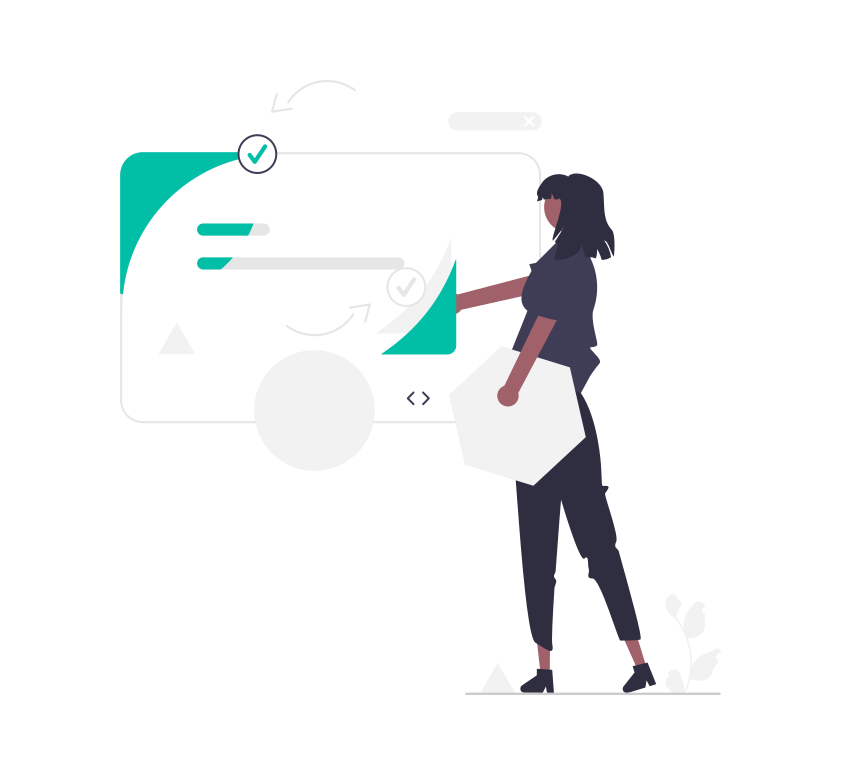How to Use Email Marketing for Growth

Email marketing is a powerful tool that can help businesses achieve sustainable growth and engage with their target audience effectively. In this article, we will explore the basics of email marketing, how to build an effective email marketing strategy, implement your campaign, and measure its success.
Understanding the basics of email marketing
Email marketing is a powerful tool that businesses use to connect with their customers, prospects, or subscribers. It involves sending targeted messages or promotional materials through email, allowing businesses to communicate directly with their audience. This form of marketing enables businesses to deliver personalised content and engage with their audience on a more personal level.
But why is email marketing so important? Well, it offers a range of benefits for businesses. Firstly, it allows businesses to build strong relationships with their audience. By sending regular emails, businesses can stay in touch with their customers, keeping their brand top-of-mind and cultivating customer loyalty.
Furthermore, email marketing is a great way to increase brand recognition. With each email sent, businesses have the opportunity to showcase their brand identity, logo, and messaging. This consistent exposure helps to reinforce brand recognition and make a lasting impression on the recipient.
Another advantage of email marketing is its ability to drive website traffic. By including links to relevant content or products in their emails, businesses can direct recipients to their website. This not only increases website traffic but also provides an opportunity for businesses to showcase their offerings and encourage conversions.
Speaking of conversions, email marketing can be a powerful tool for boosting sales. By sending targeted emails promoting products or services, businesses can directly influence purchasing decisions. Whether it’s a limited-time offer, a special discount, or a new product launch, email marketing allows businesses to reach their audience at the right time with the right message.
The role of email marketing in business growth
When it comes to business growth, email marketing plays a pivotal role. By establishing consistent communication channels through email, businesses can keep their brand top-of-mind and nurture customer loyalty. This ongoing relationship-building is crucial for long-term success.
One of the key advantages of email marketing is its ability to segment email lists. By dividing their audience into different groups based on demographics, interests, or past purchase behavior, businesses can deliver personalised messages that resonate with each segment. This level of personalisation not only increases open rates but also boosts engagement and conversions.
Moreover, email marketing provides businesses with valuable data and insights. By tracking metrics such as open rates, click-through rates, and conversions, businesses can gain a deeper understanding of their audience’s preferences and behaviours. This data-driven approach allows businesses to optimise their email campaigns, improve conversion rates, and ultimately drive business growth.
In conclusion, email marketing is a powerful tool that businesses can leverage to build strong relationships with their audience, increase brand recognition, drive website traffic, and boost sales. By adopting a strategic and data-driven approach, businesses can maximise the impact of their email marketing efforts and achieve long-term business growth.
Building an effective email marketing strategy
When it comes to building an effective email marketing strategy, there are several key steps that can help you achieve success. From identifying your target audience to creating compelling content and choosing the right email marketing tools, each step plays a crucial role in driving engagement and conversions. Let’s delve deeper into these steps to understand how they can contribute to your overall strategy.
Identifying your target audience
The first step in building an effective email marketing strategy is identifying your target audience. This involves gaining a deep understanding of your audience’s demographics, interests, and pain points. By knowing who your audience is, you can tailor your content to resonate with them and drive engagement. To accomplish this, it’s important to conduct thorough market research, analyse customer data, and create buyer personas. These buyer personas will provide valuable insights into your audience’s preferences and motivations, allowing you to create targeted and personalised email campaigns.
For example, if you are a fashion retailer targeting young adults, your research might reveal that your audience is interested in sustainable fashion and trendy accessories. Armed with this knowledge, you can create email content that showcases your eco-friendly products and highlights the latest fashion trends, thereby capturing the attention of your target audience.
Creating compelling content
Once you have identified your target audience, the next step is to create compelling content that will engage your subscribers and drive conversions. Crafting emails that are visually appealing, concise, and informative is crucial in capturing your audience’s attention. Using a conversational tone can help you establish a personal connection with your subscribers, making them more likely to engage with your emails.
Moreover, incorporating relevant visuals and compelling calls-to-action (CTAs) can significantly increase the effectiveness of your email campaigns. Visuals, such as product images or infographics, can help convey your message more effectively and make your emails visually appealing. Meanwhile, well-designed CTAs can encourage your subscribers to take action, whether it’s making a purchase, signing up for a webinar, or downloading a free resource.
Remember, the content you provide in your emails should always offer value to the recipient. Whether it’s educational content that helps your subscribers solve a problem or exclusive offers that reward their loyalty, delivering valuable content will keep your audience engaged and eager to open your emails.
Choosing the right email marketing tools
When it comes to email marketing, selecting the right tools is essential to streamline your efforts and maximise your results. There are numerous email marketing platforms available, each offering different features and functionalities. It’s important to research and compare different platforms to find the one that aligns with your needs and budget.
Some key features to consider when choosing an email marketing platform include email automation, A/B testing, and performance tracking. Email automation can help you save time by setting up automated email sequences based on specific triggers or actions. A/B testing allows you to experiment with different email elements, such as subject lines or CTAs, to optimise your campaigns for better results. Performance tracking enables you to monitor key metrics, such as open rates, click-through rates, and conversions, to measure the success of your email campaigns.
Additionally, integrating your email marketing tools with your customer relationship management (CRM) system can further enhance your email marketing efforts. By leveraging customer data from your CRM, you can create highly targeted and personalised email campaigns that resonate with your audience on a deeper level.
In conclusion, building an effective email marketing strategy requires careful planning and execution. By identifying your target audience, creating compelling content, and choosing the right email marketing tools, you can optimise your email campaigns for maximum engagement and conversions. Remember, email marketing is an ongoing process, so continuously monitor and analyse your results to refine your strategy and achieve long-term success.
Implementing your email marketing campaign
Building your email list
Before you can start sending emails, you need to build a quality email list. Encourage website visitors to subscribe to your newsletter or mailing list by offering incentives like exclusive content or discounts. Promote your email list through social media channels, website pop-ups, and landing pages. Take care to obtain explicit consent from subscribers to comply with data protection regulations.
Crafting engaging email campaigns
Once you have your email list, it’s time to create engaging email campaigns. Personalise your emails based on recipient data, such as name, preferences, or past interactions. Use compelling subject lines to entice recipients to open your emails, and ensure that the content is tailored to their interests and needs. Experiment with different layouts, visuals, and CTAs to optimise engagement and click-through rates.
Scheduling and sending your emails
The timing of your emails is crucial to maximise their impact. Consider your audience’s time zones and habits when scheduling your emails. Experiment with different send times and days of the week to identify the optimal schedule for your audience. Additionally, make sure to test your emails before sending them to ensure they display correctly across different devices and email clients.
Measuring the success of your email marketing
Key metrics to track in email marketing
When measuring the success of your email marketing campaigns, several key metrics can provide valuable insights. Monitor metrics such as open rates, click-through rates, conversion rates, and unsubscribe rates to assess the effectiveness of your campaigns. By analysing these metrics, you can identify areas for improvement and make data-driven decisions to optimise your strategies.
Interpreting your email marketing data
Interpreting email marketing data goes beyond just looking at numbers. Dive deeper into your data to gain insights into subscriber behaviour and preferences. Analyse the performance of different email campaigns, segment your subscriber lists based on engagement levels, and identify patterns or trends that can help you tailor your future campaigns more effectively.
Making improvements based on feedback and results
Finally, use the data and feedback you receive to continuously improve your email marketing efforts. A/B test different elements of your emails, such as subject lines, CTAs, or content variations, to identify what resonates best with your audience. Implement changes based on the insights gained from your data analysis and continually refine your strategy to drive better results and business growth.
Effective email marketing can be a game-changer for businesses striving for growth and long-term success. By understanding the basics, building a solid strategy, implementing engaging campaigns, and continuously measuring and improving, businesses can harness the power of email marketing to connect with their audience, drive engagement, and achieve sustainable growth.
Related Posts

How to Build Long-Term Sustainable Growth
Learn the essential strategies and practical steps to achieve long-term sustainable growth for your business.

What Is Organic Business Growth?
Organic business growth is a term that is thrown around a lot in the business world. But what exactly...

Fixed Mindset vs Growth Mindset
Discover the fundamental disparities between a fixed mindset and a growth mindset in this insightful article.
